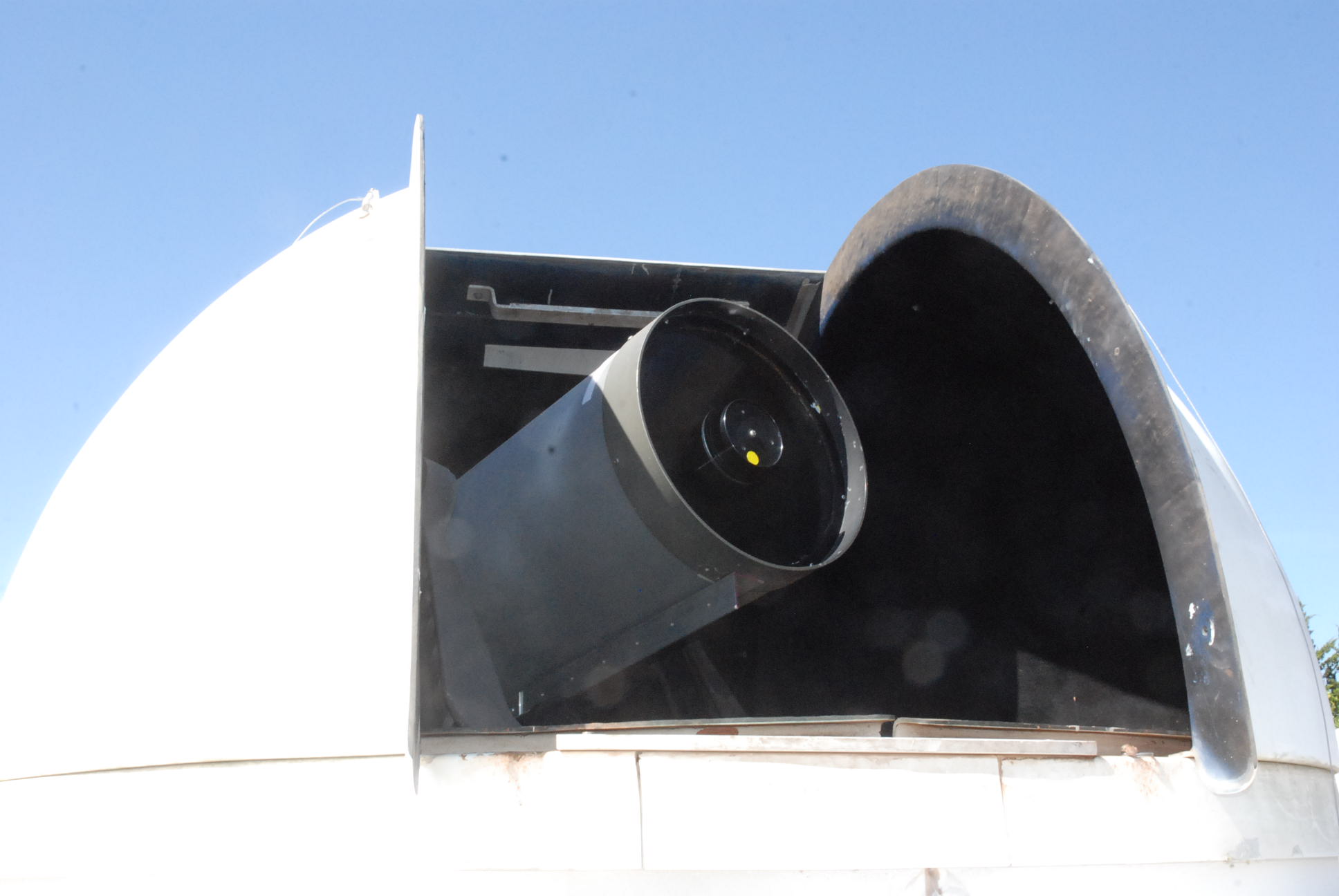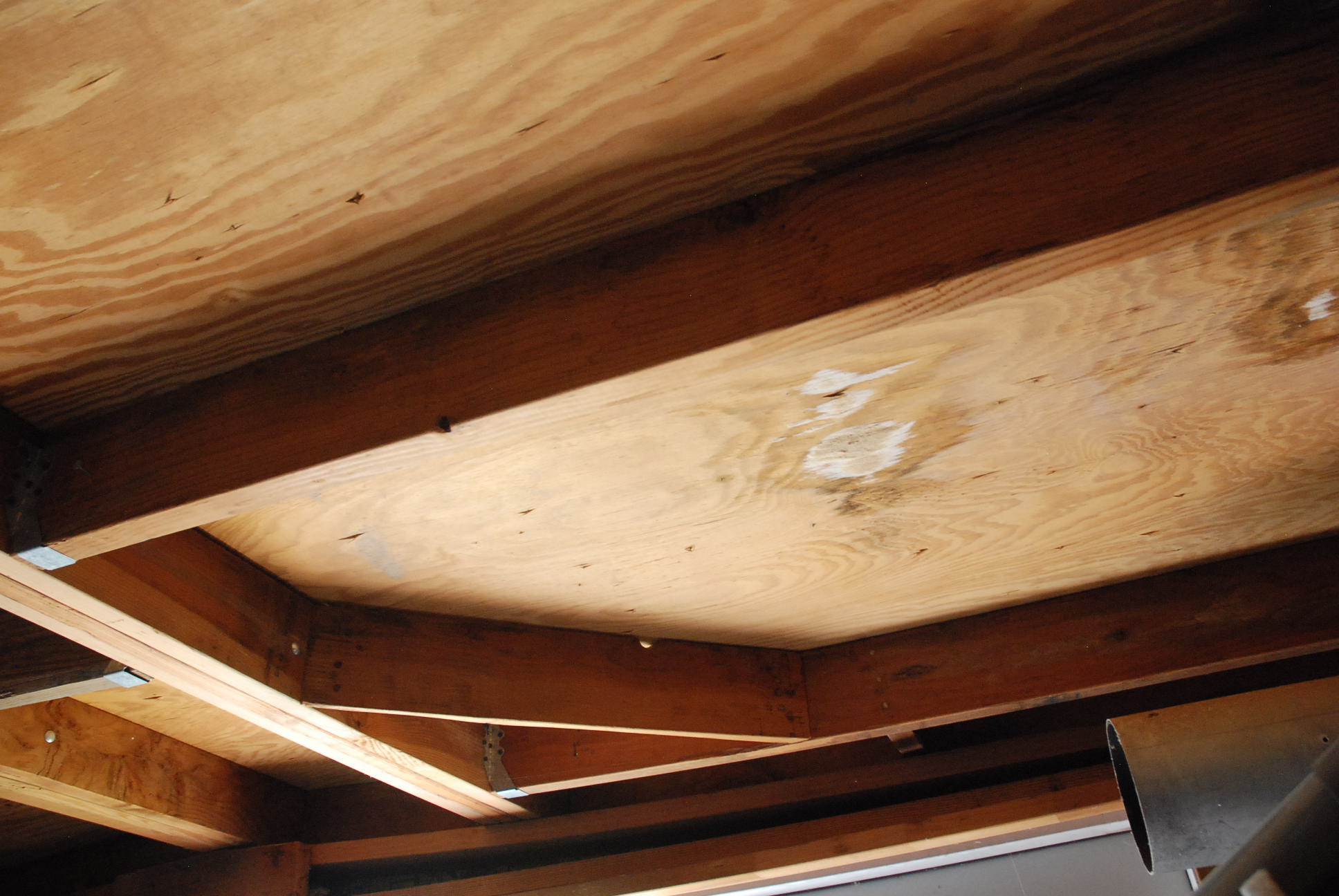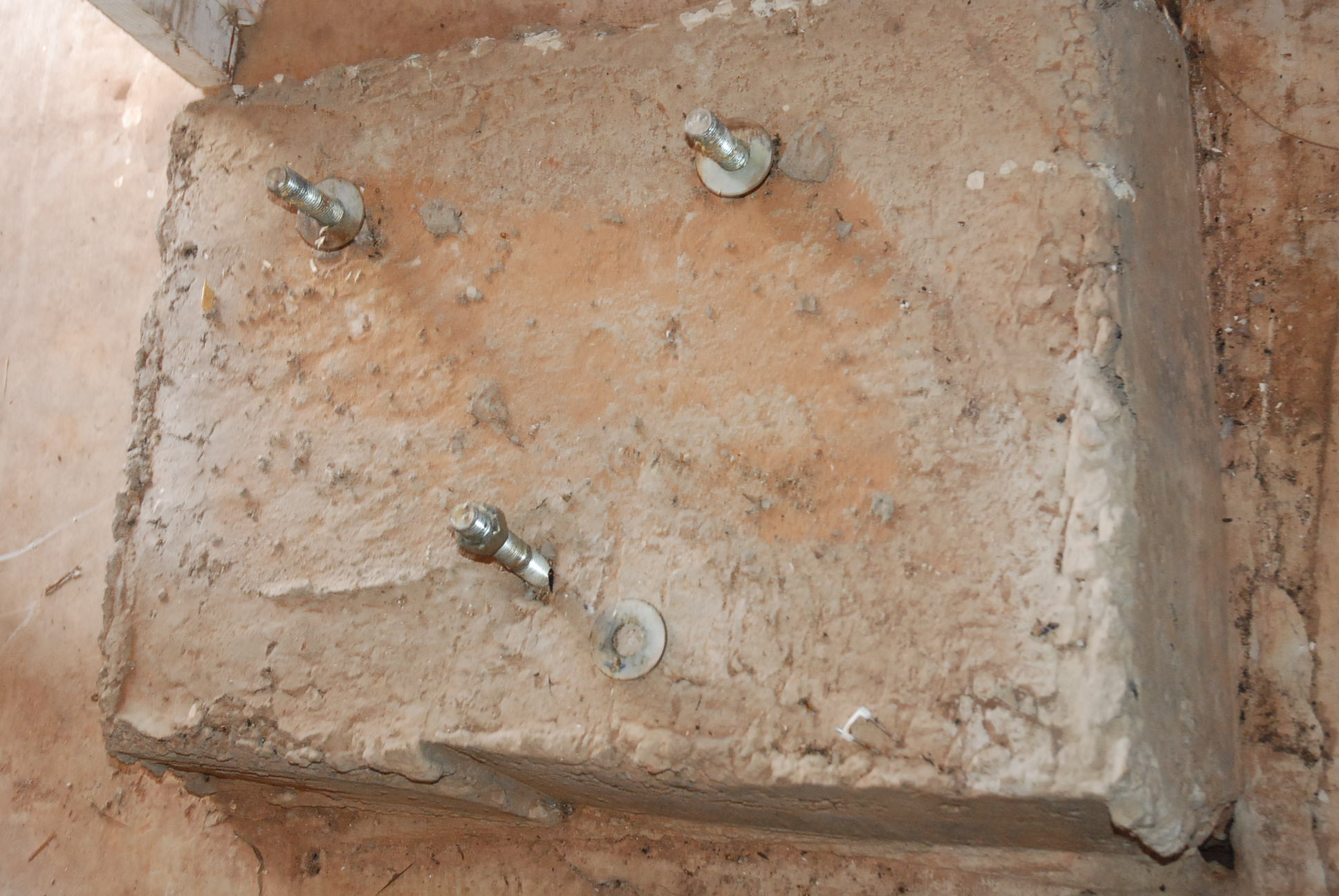
Bluebird 1

The first dome came about as I acquired a Celestron C8 telescope and made my first guided images. We lived on a quarter-acre lot on Abbey Lane and thought a dome in the backyard to be not wise. So here we are on 10 acres.
Construction
Having not done this before I decided the dome should rest on a rectangular building. Going carefully I decided a 6 foot dome would do but I might want a 10 foot dome also or instead. It seemed to me that an octagonal roof structure should support a round dome. Below here you see the structure for the never built second dome in Bluebird 1.

So I laid concrete footing for two telescopes, about a cubic yard of concrete with embedded, 1-inch J-bolts of the same triangular pattern for both proposed telescopes. The 8-inch telescope was mounted on an 8 foot tall column of 10-inch steel with a welded steel top plate. At that time I thought all observatories should allow for 7-foot tall users. Wrong!! Anyway see the unused concrete support for a second telescope below.

The Telescope
As seen on other parts of the web site, we eventually built Bluebird 2 at a time when that telescope was shared with 5-foot tall, David Lien. But back to Bluebird 1. Years ago we visited Bobby Leonard and his wife in Bermuda. Bobby had set up his 14-inch telescope on a tripod by the pool. He turned to me for advice. I chose the only bright thing in the sky, and focused on it. This turned out to be about 2 days after the comet hit Jupiter. It was the view of a lifetime.
As time went on Bobby did little observing and generally did literature search writing. On several occasions I offered to buy his telescope but he declined. Finally in 2012 I got it to Stillwater. They all told me "you can't put a 14-inch telescope in a 6-foot dome," but here it is. To be sure, it's a little tight. But it works.

The telescope is on a commercial mount which is replete with drive motors in both RA and DEC. I've put a 3-inch refractor on it as a visual spotting scope. Its barely possible to stand in the dome beside the telescope so dress lightly here and suck in your breath.

While some visual work was possible in this dome with the original, 8-inch, telescope, the 14-inch telescope in the 6-foot dome is best operated remotely. To that end you will find notes on the control room on the equipment page of the web site.
Precision Time Instrumentation
Much of my work has been precision time related. In the early days this was supported by the radio station, WWV, operated by the National Institute for Standards and Technologies, NIST. The first radio receiver was the Hallicrafters, SX-28, a vintage, WW2 instrument contributed by my family to this effort. While I show it here for historical purposes, it has been largely replaced by both GPS and more modern radio receivers.
